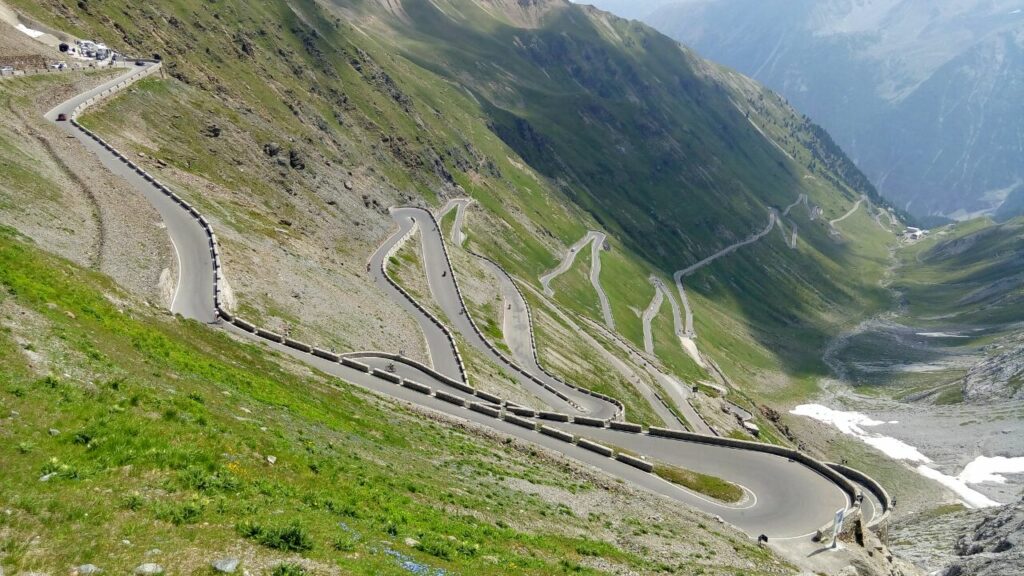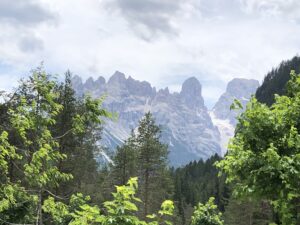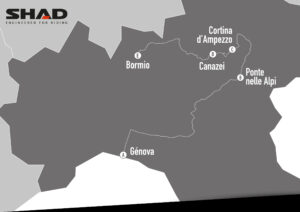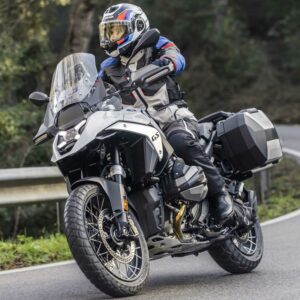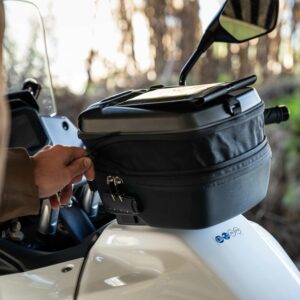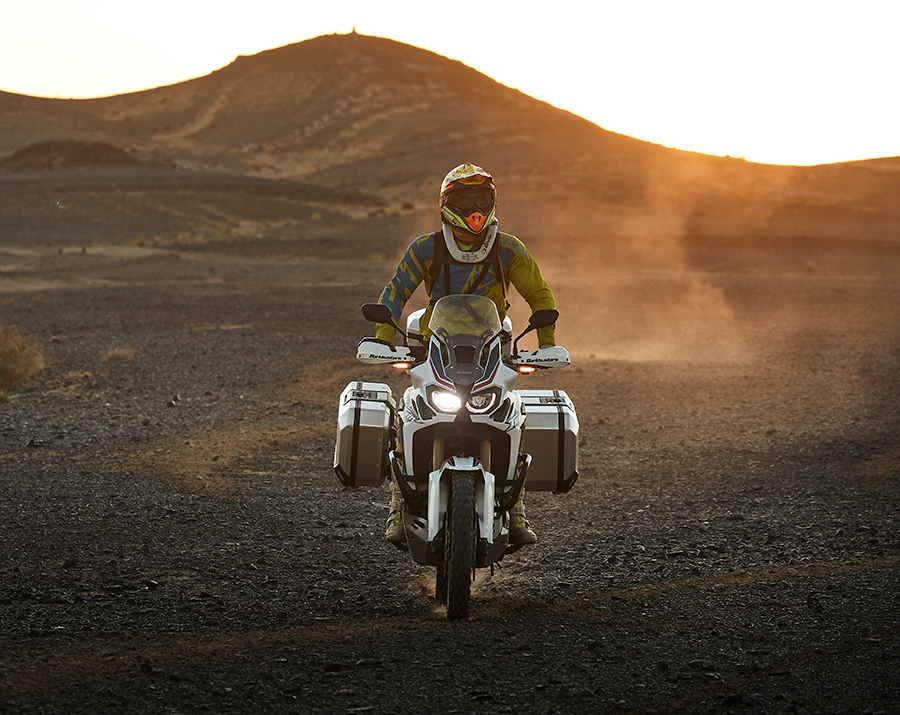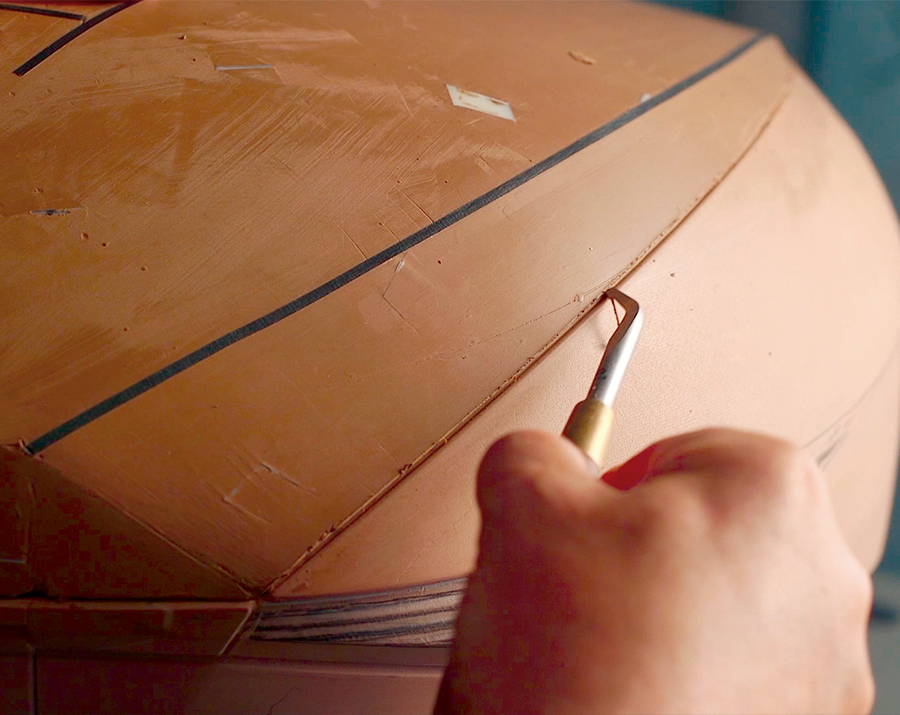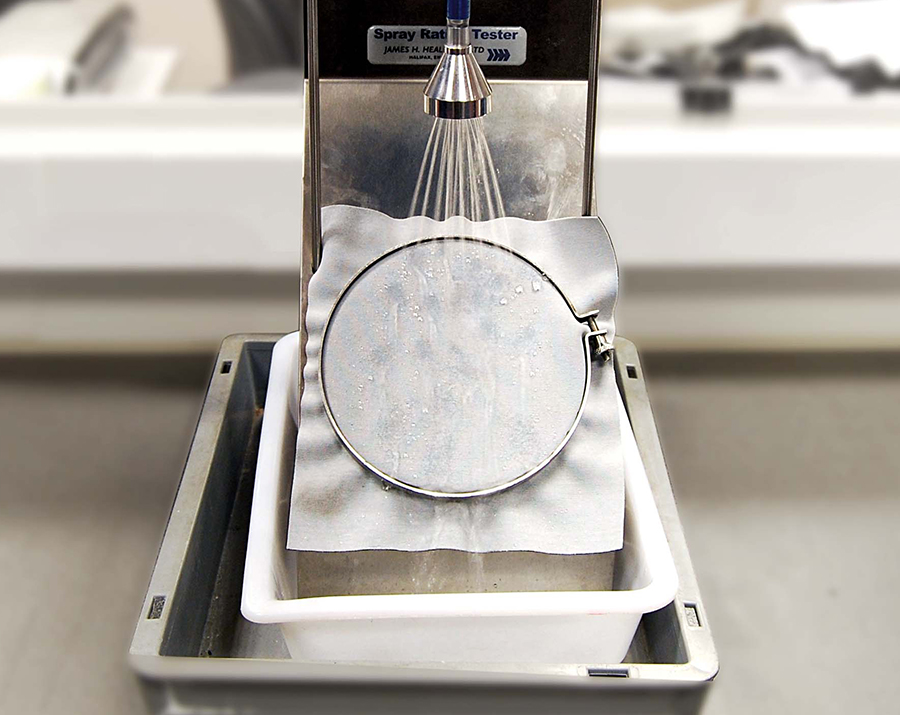If we were to compile a list of the top 10 most biker-friendly roads in the world, there is one that would undoubtedly stand out for its own merits. The “Passo dello Stelvio” is an Italian mountain pass situated 2757 meters above sea level. It is the second-highest paved pass in the Alps (third if we include the “trick” of the French Col de la Bonnette).
Currently, we can access its summit via three roads: two from Italian territory and one from Switzerland. The most popular is the route from the eastern side of Trafoi, where the famous 48 “tornantis” (the Italian term for hairpin turns of 180 degrees) are located, which have made it legendary. Undoubtedly, this is the stretch to ride without exception, a must if we want to boast of having covered the much-coveted Pass.
The SHAD route to the Stelvio
How can I plan my trip and what can I see nearby? Our route will depend on the days available for the journey. With sufficient time, a transalpine route starting from Gap and Tende can take us to the Stelvio in 4 stages, covering the main and most mythical passes of the French, Swiss, and Italian Alps.
Of the multiple possible routes, we propose one that may be very complete, which we will call “the Route of the Passes.”
Day 1:
We will start from Genoa, on a day when we will gain time to get as close as possible to the most mythical mountains of Italy: the Dolomites. From Genoa, we will take the highway to Piacenza and Vicenza. There, via expressway to the area of Ponte Nelle Alpi, where we can sleep, depending on availability. For the more daring, there is a more extreme and scenic route that passes through Asiago, Foza, and Primolano. Later, through Villabruna, Cesiomaggiore, and Paderno, always riding at the foot of the Bellunesi Dolomites.
Day 2:
We will ride through the Cadore Valley along the SP251 and the beautiful SP347. The area of Lake Cadore offers a good range of accommodation and an exceptional resting place among the mountains. In Santa Caterina, we will shorten through San Antonio towards Austria, in a loop with waterfalls and numerous ski slopes. In Dobbiaco Toblach, we will take the SS51, which has very good pavement, to reach the tourist spot where we can see the famous “Three Peaks” among spectacular mountains and Lake Landro, which reflects their silhouette in the water. A few meters further, we will turn left towards Lake Misurina, a lake that was used for therapeutic purposes for treating sick children due to its healing properties. From Misurina, we can also access the Three Peaks park if you want to get closer to the mountain, though be aware that access is toll-based… and it’s not cheap. In Misurina, we will head towards Cortina D’Ampezzo, our rest stop for the day.
Day 3:
From Cortina, we will take the road to Passo Falzarego and, a few kilometers later, turn onto the SP 638 towards the incredible Passo Giau, not without first enjoying the views from the Ru Curto bridge. The road is memorable, with its linked hairpins and the changing landscape as we gain altitude, offering spectacular views from the summit.
Our next target is Passo Pordoi, at the other end of the Marmolada, with Piz Boé on our right. We will descend the winding road to Canazei, our rest stop for the day.
Day 4:
Today is the day. We will leave Canazei via the SS48 to Vigo di Fassa, where we will ascend to Lake Carezza. On the descent towards Bozen, on the SS241, we will find the small road LS 132 to the right. This road also leads to Bozen but is much more touristy (and narrow), passing by an observatory and various artisanal areas.
After crossing Bozen, we recommend reaching the outskirts of Meran via the interior road. Here, besides enjoying the views of picturesque villages like Nals, Tisens, or Narano, we will ride through immense apple fields, the local crop par excellence and the basis for delicious Schnaps.
After Meran, we will continue westward via the SS38 to Spodigna. Here we will start to see signs for the Stelvio. From here and from Trafoi, the festival begins. 48 hairpin turns of 180 degrees await you, increasingly tighter. If you don’t have much experience with these kinds of turns, we advise you to practice before the trip, although being uphill, they will be somewhat easier than downhill.
Some shopping and coffee at the summit, the obligatory photo at the sign, and we descend towards Bormio. In case of a motorcycle gathering, the sign at the descent from Passo Stelvio is usually less crowded. Spending a night in Bormio, to edit photos… and rest!
What should we pack?
Besides our clothes, you should not forget essential tools:
- – Keys for the most common parts of your motorcycle,
- – Cable ties
- – Duct tape
- – A puncture repair kit
- – Lubricants
In an area with such changeable weather as the Alps, you should not forget, in addition to your motorcycle gear:
- – Windbreaker
- – A spare pair of gloves
- – Rain gear
We are in the Alps, and the weather is very changeable, so we may encounter storms that dry out the cables and chains of our motorcycles. Of course, wear motorcycle gear from head to toe. In summer, temperatures in these passes drop considerably, so if you are wearing summer gear, a windbreaker is advisable to maintain your temperature. A spare pair of gloves and rain gear, which you will surely use.
What SHAD equipment is recommended?
For this type of trip, the luggage setup can vary depending on whether you are riding solo or with a partner. The expandable product family is considered the most suitable.
The SH38X Expandable and the SH59X and SH58X top cases offer flexibility in terms of the volume to be used, with the option to reduce it and make the motorcycle more agile on the winding curves of the Passo dello Stelvio.
The addition of tank bags is ideal for accessing frequently used items, such as wallets or glasses, with the security offered by the Double Locking System.
Text and photos of the route: Josep Chaume
